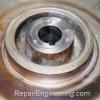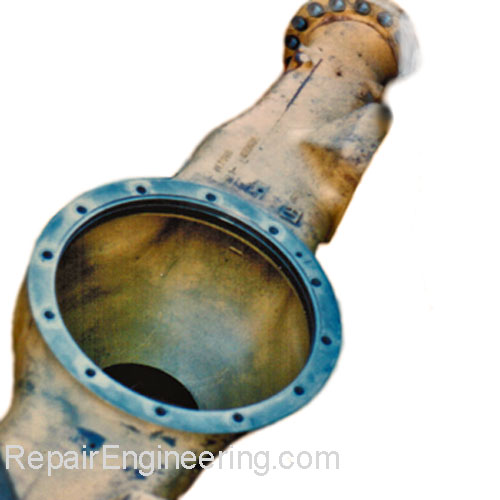PTO Housing Repair
Contributed by: RepairEngineering
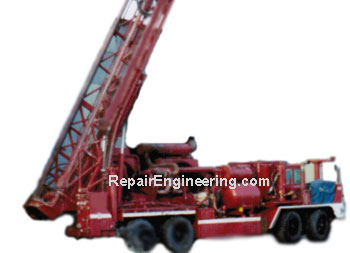
In the mining industry, exploratory drill rigs like this one are used to help locate promising ore deposits.
On this drill rig, a diesel engine is used to provide the power for drilling operations.
The power from the diesel engine is transmitted through a Power Take-Off (PTO) assembly.
Project Overview
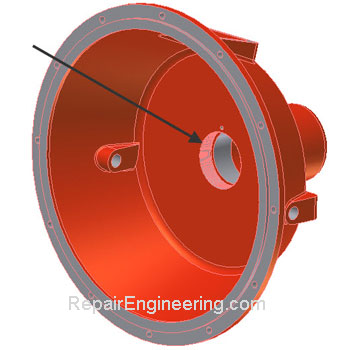
This is a model of the PTO housing from the drill rig shown above.
In this PTO housing, the thrust nut retaining threads (indicated by the arrow in this photo) became damaged and corroded over years of service - and needed to be repaired.
Unique Challenges
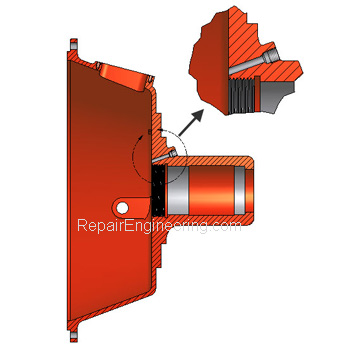
This is a cross-section view of the PTO housing.
One challenge that made this particular repair difficult to accomplish is the close proximity of an access hole (shown in the detail view) to the damaged threads.
The access hole needed to remain intact after the repair was complete.
Options Considered
Several thread repair options were considered...
- The use of a weld build-up process was considered, but not utilized due the difficulties of welding cast iron - and due to the possible concerns of causing distortion in the housing material.
One option that was considered was to create oversized threads in the PTO housing, and to also create a corresponding custom oversized thrust nut to match.
This option was a technically workable solution - but was not selected because of the desire to maintain commonality of parts in the drill rig fleet.
PTO Housing Repair - Step 1
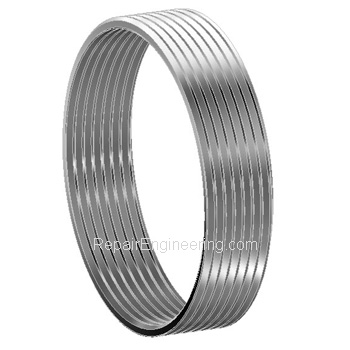
The method that was used was to create a custom thread insert like the one modeled here.
- The internal threads of the insert were obviously sized to be the same diameter and pitch as in the original PTO housing.
- The external thread major diameter was sized to be as large as possible without interfering with the access hole. This resulted in a non-standard sized diameter external thread.
- Because of the thin cross-section wall of the insert, the thread pitch of the external thread was made the same pitch as the internal thread.
To make most effective use of the material, the internal and external threads were synchronized, as shown here.
- Because of the thin cross-section wall of the insert, the material used in its manufacture was a heat-treated 4140 chrome-moly steel... chosen because of its strength properties.
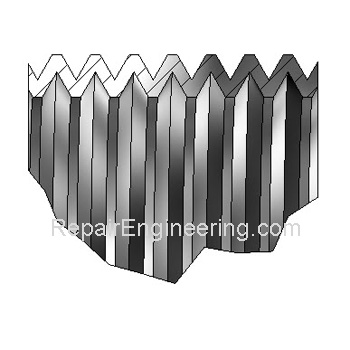
PTO Housing Repair - Step 2
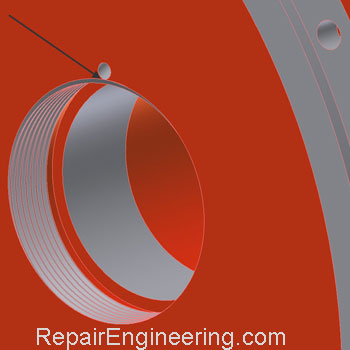
To repair the PTO housing, a lathe was used to bore out the old threads, and to cut new over-sized threads as shown here.
(Notice the location of the access hole relative to the larger diameter of the newly-machined, over-sized thread.)
Calculating the Hole Diameter
Because the external thread of the custom insert is a non-standard size, the required hole size is not listed on a thread chart.
The required hole size for the new custom thread was calculated using the following formula...

In this formula...
Dh = required hole size for the new thread (inches)
BD = basic major diameter of the thread (inches)
TPI = number of Threads Per Inch (thread pitch)
When calculating the hole size using this formula, the number "75" was used as the "Desired % Full Thread" factor in this specific repair application.
In practice, the Desired Full Thread percentage value selected could range from "55" to "75" for a repair of this type.
PTO Housing Repair - Step 3
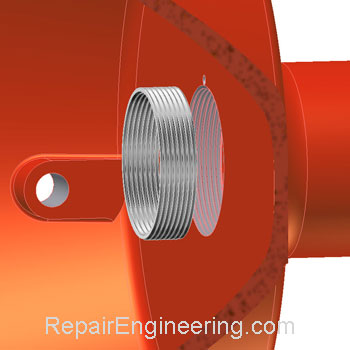
In this partial cut-away view, the thread insert is about to be installed in the PTO housing.
The insert was installed using Loctite on its external threads...
...and then the insert was screwed into the housing until the top surface of the insert was flush with surface of the housing.
PTO Housing Repair - Step 4
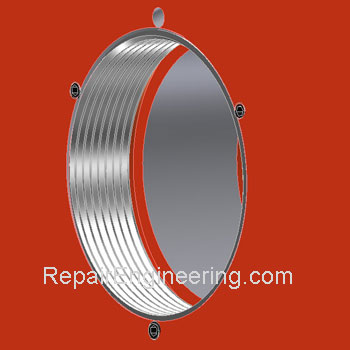
Once the insert was seated into position, and the thread adhesive cured...
...the insert was staked in place using 3 set screws as shown here.
Completed Repair Project
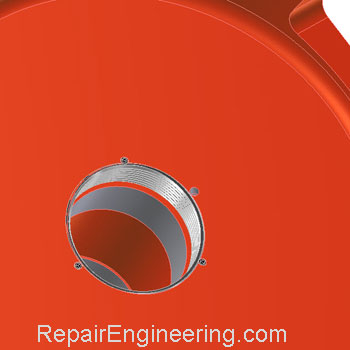
This is a model view of the completed repair.
Repair Project Photo
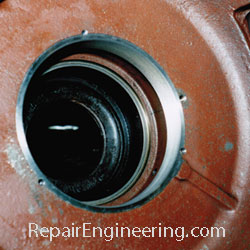
This is a photo of the actual PTO housing showing the completed repair.


